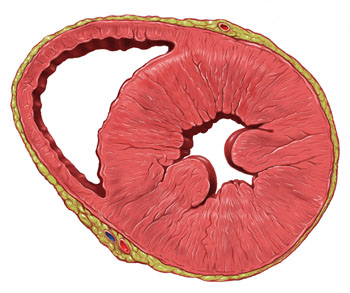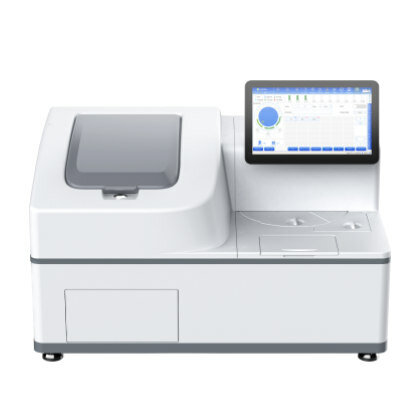Possible Target for Gene Therapy May Correct Cardiac Hypertrophy
By LabMedica International staff writers
Posted on 20 May 2014
A deficit in the expression of the protein Erbin (ErbB2 interacting protein) has been linked to the development of cardiac hypertrophy and heart failure.Posted on 20 May 2014
The gene that encodes the Erbin protein is a member of the leucine-rich repeat and PDZ domain (LAP) family. The encoded Erbin protein contains 17 leucine-rich repeats and one PDZ domain. It binds to the unphosphorylated form of the ERBB2 protein and regulates ERBB2 function and localization. Erbin's C-terminal PDZ domain is able to bind to ErbB2, a protein tyrosine kinase which is often associated with poor prognosis during the development of skin cancer. Its N-terminal region has been shown to affect the Ras signaling pathway by disrupting Ras-Raf interaction.

Image: Left ventricular cardiac hypertrophy in short axis view (Photo courtesy of Patrick Lynch).
Investigators at the Hebrew University of Jerusalem (Israel) looked at Erbin levels in humans and animals with and without cardiac hypertrophy. In addition, they genetically engineered a line of mice to lack the Erbin gene.
They reported in the April 22, 2014, issue of the journal Proceedings of the National Academy of Sciences of the United States of America (PNAS) that there was down-regulation of Erbin expression in biopsies derived from human failing hearts.
In mouse models cardiac hypertrophy was induced either by isoproterenol administration or by aortic constriction. In both models the level of Erbin was significantly decreased. The genetically engineered Erbin knockout mice rapidly developed decompensated cardiac hypertrophy and following severe pressure overload, all of these mice died from heart failure (compared to only about 30% mortality observed in the control group).
It is known that Erbin inhibited Ras-mediated activation of the extracellular signal-regulated kinase (ERK) by binding to the protein Soc-2 suppressor of clear homolog (Shoc2). The data obtained during this study showed that ERK phosphorylation was enhanced in the heart tissues of the Erbin knockout mice. Furthermore, Erbin associated with Shoc2 in both whole hearts and in cardiomyocytes, and that in the absence of Erbin, Raf was phosphorylated and bound to Shoc2, resulting in ERK phosphorylation.
The investigators concluded that, "Erbin is an inhibitor of pathological cardiac hypertrophy, and this inhibition is mediated, at least in part, by modulating ERK signaling. We describe a cardioprotective role for Erbin, which suggests it is a potential target for cardiac gene therapy."
Related Links:
Hebrew University of Jerusalem













